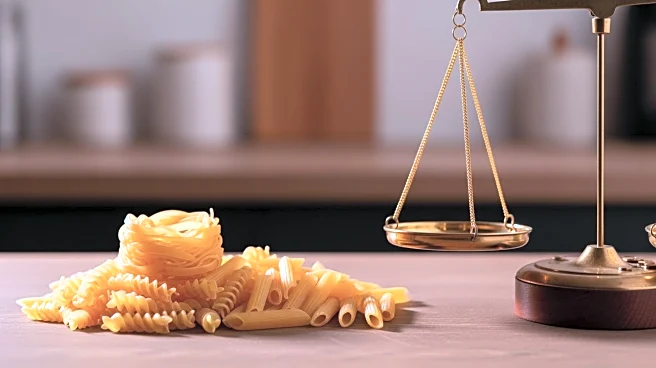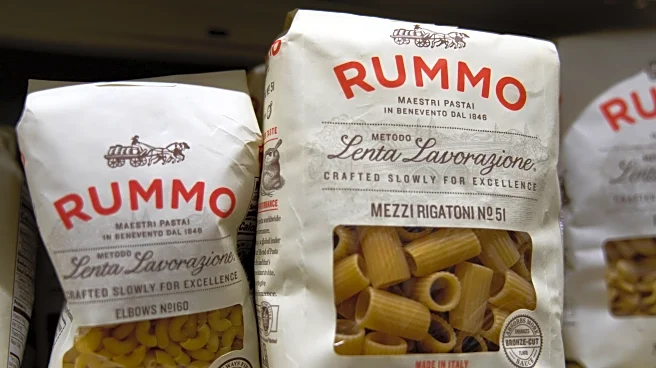What's Happening?
The U.S. Commerce Department has initiated an antidumping review concerning Italian pasta imports, alleging that Italian producers have been selling pasta in the U.S. at below-market prices, thereby undercutting local competitors. This review has led
to the potential imposition of a 107% tariff on Italian pasta, which includes a 92% duty on top of the existing 15% tariff imposed by President Trump's administration on European exports. The proposed tariff has caused significant concern among Italian pasta producers, who fear that their sales in the U.S., their second-largest export market, could drastically decline if prices for American consumers more than double. The Commerce Department's investigation was prompted by complaints from U.S.-based companies, including 8th Avenue Food & Provisions and Winland Foods, which claim that Italian pasta is being dumped in the U.S. market.
Why It's Important?
The imposition of a 107% tariff on Italian pasta could have significant implications for both U.S. consumers and Italian producers. For U.S. consumers, this could lead to higher prices for imported pasta, potentially reducing the availability of authentic Italian products. For Italian producers, particularly small and medium-sized enterprises, the tariff could severely impact their ability to compete in the U.S. market, which accounts for a substantial portion of their exports. The situation has also drawn attention from Italian politicians and the European Commission, who are working to oppose the U.S. sanctions. The broader impact on international trade relations between the U.S. and Europe could be significant, potentially leading to retaliatory measures and affecting other sectors.
What's Next?
The Commerce Department's final decision on the tariff is scheduled for January 2, with a possible extension of 60 days. Italian producers and the European Commission are likely to continue diplomatic efforts and legal actions to oppose the sanctions. If the tariff is implemented, it could lead to changes in trade dynamics, with Italian producers possibly seeking alternative markets or considering production shifts to avoid tariffs. U.S. retailers and consumers may need to adjust to new pricing structures or seek alternative sources for pasta products.
Beyond the Headlines
The proposed tariff raises questions about the fairness and transparency of trade practices and the impact of protectionist policies on global trade. It highlights the challenges faced by small and medium-sized enterprises in navigating international trade regulations and the potential consequences of geopolitical tensions on everyday consumer goods. The situation also underscores the importance of diplomatic engagement and legal recourse in resolving trade disputes.















